For Captured Carbon, Scientists Plot a Sub-Ocean Tomb
In 2010, as the Deepwater Horizon rig sank and millions of gallons of oil gushed into the Gulf of Mexico, Kate Moran’s phone rang in Washington, D.C. At the time, she was assistant director in President Barack Obama’s Office of Science and Technology Policy, and government officials recognized that she brought years of ocean drilling experience. Within a matter of days, and guided by her understanding of deep ocean geochemistry, the government rapidly deployed resources and experts to manage the crisis, overseeing controlled burns, remote undersea vehicles, even air and sea traffic control systems. “It was remarkable,” Moran said recently of the mobilization. “Unbelievably remarkable.”
That memory looms large as Moran leads a project to mitigate the environmental impacts of fossil fuels on a much larger scale. Now president and CEO of the research institute Ocean Networks Canada, she is also the principal investigator for Solid Carbon, a project overseen by the institute that aims to permanently remove greenhouse gases from the atmosphere by entombing carbon under the seafloor.
“You can do big things in the ocean — the oil industry does,” Moran said, expressing dismay that governments have not marshaled resources like they did for Deepwater Horizon. “So why not look at a system where you could have essentially an independent system offshore that actually removes CO2 from the atmosphere and puts it away forever?”
In addition to transitioning away from fossil fuels, climate science experts are increasingly convinced that greenhouse gases will need to be removed from the atmosphere to avoid cascading impacts of climate change. A new global climate deal from the United Nations climate conference, COP28, doesn’t require countries to completely phase out fossil fuel use, but rather relies on investments in renewable energy and carbon removal techniques to mitigate the impacts of greenhouse gases. National climate plans, too, increasingly depend on carbon removal.
But it’s a gamble: Removing enough carbon dioxide on a large scale hasn’t been fully tested. And the slower the transition away from fossil fuels, the more carbon removal will be needed to reach goals and avoid catastrophes.
“My students always say, ‘But don’t we have to try?’ And the answer is absolutely,” said David Goldberg, a professor at Columbia University’s Climate School who designed the Solid Carbon plan with Moran.
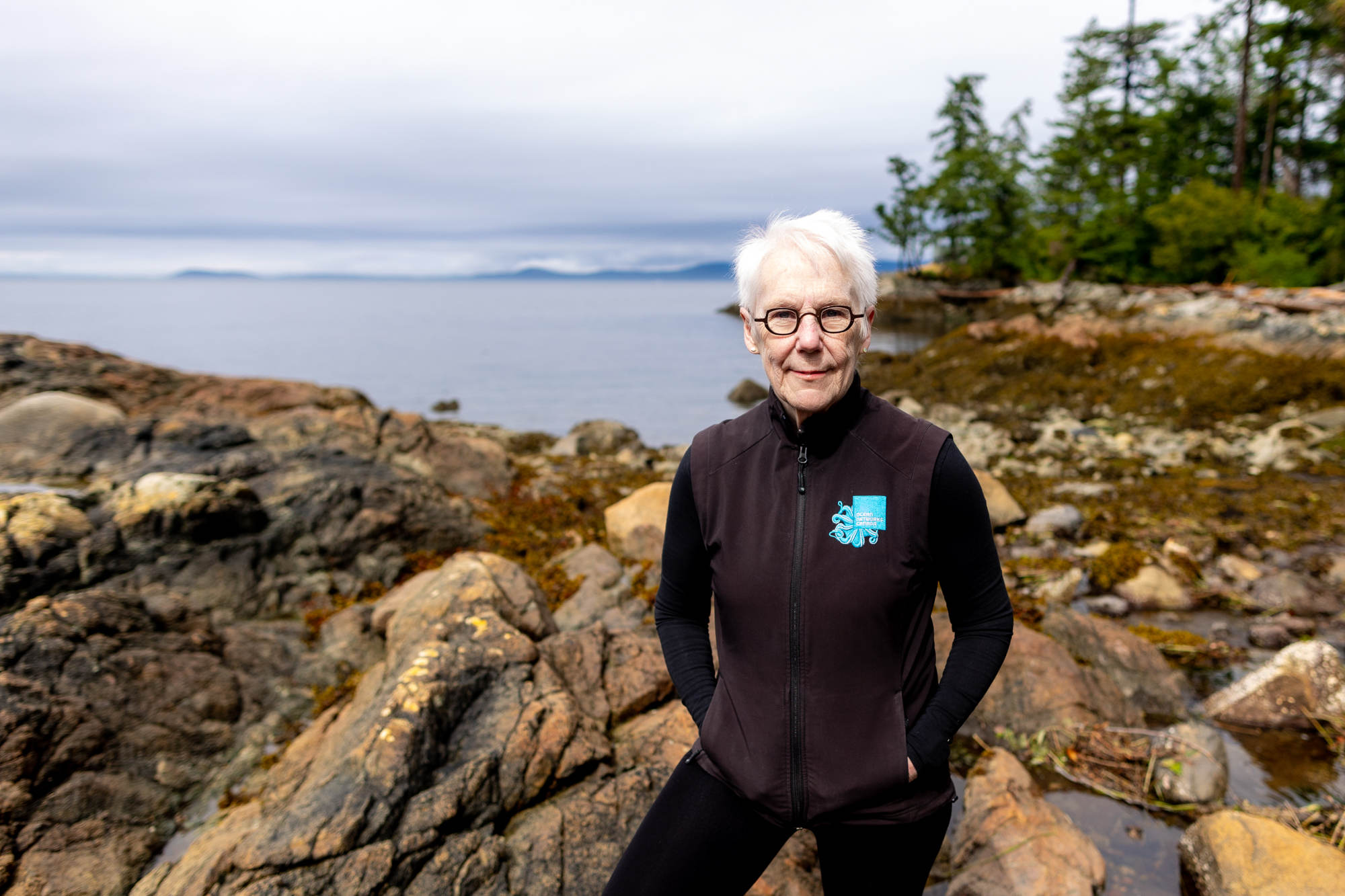
Effective carbon removal is essentially a two-step process: first, remove the carbon dioxide from the air, and then somehow keep it from returning for at least several decades and ideally much longer. Forests and other plant life remove and store carbon dioxide naturally, but it risks returning through decomposition or fires. Solid Carbon would use machinery that filters out carbon dioxide both from sources of emissions, as well as directly from the air. The next step is finding a way to permanently store the trapped carbon dioxide.
Researchers at Solid Carbon are turning to basalt, a volcanic rock that easily reacts with acids like carbon dioxide, to turn the greenhouse gas into a carbonate rock under the seabed. Storing carbon in geologic formations like this is expected to be the most long-lasting method among options to keep carbon dioxide out of the atmosphere. Under the Cascadia Basin off the coast of Vancouver Island lies the most extensively studied ocean basalt. What’s more, it’s colossal: large enough in theory to store carbon from all global annual emissions many times over.
Solid Carbon offers a glimpse into the enormous scale that would be required to impact emissions. In one version of its plan, dozens of floating rigs on the Pacific Ocean would be coupled with many more wind turbines to funnel compressed, carbon dioxide nearly 2 miles under the sea. But that would only remove less than 1 percent of what climate scientists predict will be needed by 2050. If carbon removal techniques are to make any dent in emissions, they will need to scale up multiple magnitudes.
The slower the transition away from fossil fuels, the more carbon removal will be needed to reach goals and avoid catastrophes.
Unlike many other carbon removal projects, Solid Carbon isn’t funded by fossil fuel interests, and the staff say they avoid influence from oil and gas. Now wrapping up a $1.5 million, four-year feasibility study funded by Pacific Institute for Climate Solutions at the University of Victoria and building off a study funded by the U.S. Department of Energy, Moran’s team is hoping to start a pilot project soon that would inject carbon dioxide into the seafloor. Demonstrating how this would all work, Moran estimates, will cost another $60 million. But the project is struggling to find funding.
“I think this is a very important experiment, because it opens up a lot of opportunities,” said Sigurður Gíslason, a research professor at the University of Iceland who has studied basalt carbon storage but is not involved with Solid Carbon. “It’s so important to get this started as soon as possible, because time is so limited.”
Like several other operations that seek to store carbon underground, Solid Carbon’s project leverages two chemical properties of basalt to solidify carbon. First, it likes to react with acids, trading ions to form new kinds of rock. Second, it can be highly porous and permeable, meaning that not only are there spaces within the rocks, like bubbles, but that the bubbles are connected and liquid can flow between them.
More than a decade ago, researchers set out to understand the permeability of the Juan de Fuca plate, where the Cascadia Basin sits. They traced markers in water injected into holes into the bedrock and found the water traveled a few thousand feet over a few years. Their studies strengthened previous evidence from other ocean basalts, particularly off the western coast of Central America, that there is fluid already moving under the seafloor naturally, driven by gravity and heat from the Earth.
Water flows in and out of undersea mountains, sometimes moving long distances through the bedrock, said Martin Scherwath, a marine geophysicist with Ocean Networks Canada. Essentially, the basalt crust is roughly similar to a sponge.
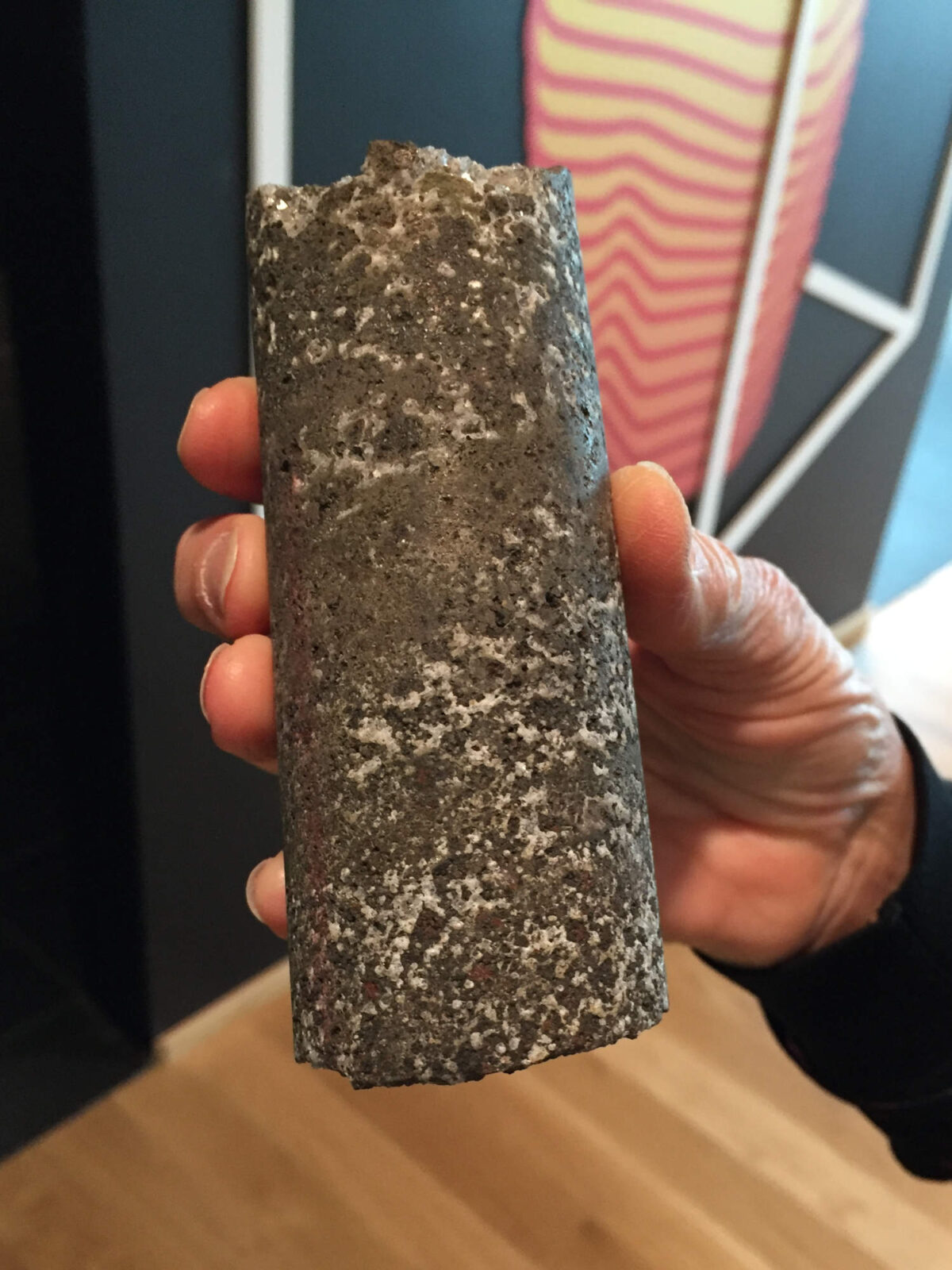
In addition to reacting with carbon dioxide, basalt is highly porous and permeable — it can essentially act like a sponge. Here, a core of basalt from Iceland was injected with dissolved CO2, forming white carbonate deposits.
Visual: Pacific Institute for Climate Solutions
Atop the crust lie hundreds of meters of sediment, which create seals that would keep infusions of carbon dioxide buried, since there is little to no interaction between the water in the crust and the water above the sediment. And since water in the crust is dramatically hotter than the deep ocean water, even if carbon dioxide were to rise out of the crust, it would likely react with the sediments to create hydrates that look like solid ice, sealing off any opening. And even if these measures fail, carbon dioxide gas at that pressure is denser than seawater, so gravity would keep it down. “Our motivation in doing this is to be as safe and durable as possible,” said Scherwath.
Solid Carbon estimates that the basalt reservoir in the Cascadia Basin could potentially bury carbon dioxide on the scale of hundreds of gigatons. Globally, ocean basalts have more than enough room to store all known carbon from fossil fuel deposits many times over.
But there are also large basalt deposits on land. Todd Schaef, a senior research scientist at the Department of Energy’s Pacific Northwest National Laboratory, has found that the region he studies in Washington has a capacity of at least 100 gigatons, and compared with other land basalts, there seem to be fewer fractures for potential leakage. “We have an enormous resource,” Schaef said. “And we can use just a tiny bit of it and still make a big difference.”
Moran and the Solid Carbon team believe they have several options to capture the carbon they plan to inject into the seabed. They could take carbon dioxide captured directly at plants that produce high emissions, like cement factories. In that case, however, they could only store as much carbon as could be transported to Vancouver Island. Another option may be to eventually use direct air capture technologies, which capture carbon dioxide directly from the atmosphere. Direct air capture has received the most recent research attention among carbon removal options, and it demands a lot of energy and high costs because carbon dioxide exists in atmosphere in very low concentrations.
“Direct air capture is not there yet in terms of volume and economics, but it’s getting there,” Moran said. “We want to be ready when that happens.”
At a pioneering direct air capture plant in Iceland, the basalts below the land surface are very porous and fractured, which could risk allowing carbon dioxide to escape. To ensure the carbon dioxide reacts quickly with basalt, the firm Carbfix, where Gíslason worked from 2006 to 2020, dissolves captured carbon dioxide into freshwater, creating something similar to fizzy soda water. After injection into basalt, the bubbly water solidifies underground within two years. But that demands more than 25 times as much water as carbon dioxide by weight, adding to costs and creating additional risks if freshwater is needed on land. Research on capturing carbon dioxide from seawater — plentiful and rich in CO2 — is also advancing, though many questions remain.
But oceanic basalts can make use of a method that uses no water at all, said Schaef, by compressing carbon dioxide so that it becomes a state of matter in between liquid and gas, called supercritical carbon dioxide.
According to Solid Carbon, globally, ocean basalts have more than enough room to store all known carbon from fossil fuel deposits many times over.
Using supercritical carbon dioxide can reduce the costs of injection by a third, said Benjamin Tutolo, a geochemist at the University of Calgary. His recent experiments and simulations suggest almost all of the supercritical carbon dioxide injected into in the seabed would be solid after a few decades, while Schaef’s research at one site on land suggests that 60 percent of it would become rock in two years.
But capturing carbon dioxide, which exists in very low concentrations in air, and converting it to a supercritical form and injecting it into the seafloor, will consume immense energy and investment. In Solid Carbon’s current vision, 50 to 80 large offshore wind turbines would power a direct air capture system to capture one million tons of carbon dioxide a year. Then, a pipeline would funnel the fluid to holes drilled in the seafloor. One million tons is 0.01 percent of the amount that authors of a report on carbon removal estimate will need to be removed from the atmosphere by 2050.
Curran Crawford, an engineering professor at the University of Victoria, leads the team’s work to figure out how each of these pieces fit together into a system. He hopes that Solid Carbon can rely completely on wind energy that is independent from existing electric grids. Luckily, the wind is strong off the coast of Vancouver Island. “It’s one of those ones where I’m sure we can build it,” Crawford said. “Whether we can do it at a price point that people will accept or somebody will pay for? I think that’s a challenge. And then I think the other one is, can we do it at a scale that’s relevant?”
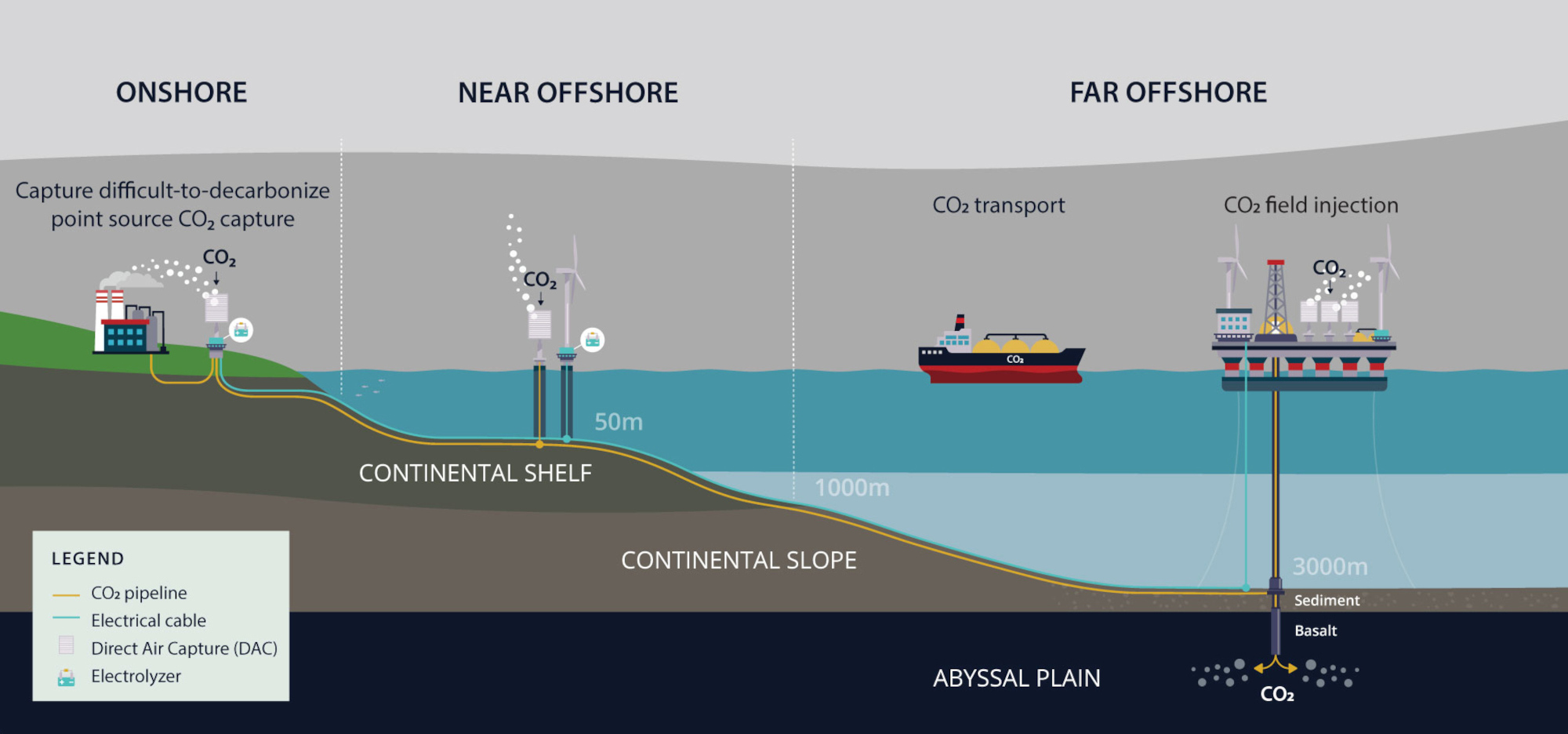
It’s a vast and complicated project to address an even larger problem, says Terre Satterfield, a social scientist who studies public perceptions of technology and works with Solid Carbon. In the spring of 2021, she collected more than 2,000 survey responses from British Columbia and Washington State to understand how people view Solid Carbon’s project.
She found that people who were motivated to protect the environment were generally supportive of the new technology. “In a climate context, there’s an openness that is occurring around things that would previously have been just kind of flat out rejected,” Satterfield said. However, when she asked people about specific parts of the whole operation, they were more hesitant, especially regarding the impacts around injecting industrial air pollution into the ocean.
Léa Lévy, a geophysicist and senior lecturer at Lund University who is not involved with Solid Carbon, suggests that the growing imperatives of climate change have influenced how scientists and the public view efforts to intervene in the earth’s geological systems. In Lévy’s eyes, the evidence that basalt storage can work still has large uncertainties, even as many scientists say it’s likely to be the most durable method of storing carbon away from the atmosphere.
Some research has suggested that carbon dioxide does not necessarily become the stable carbonate that engineers intend. One paper suggested that it may instead become incorporated into microbial life, and another found that it might be transformed into the mineral ankerite. Both of those possibilities might not be as permanent as needed to make a significant impact on storing emissions, Lévy says. It’s also unclear whether the flow of carbon dioxide would continue to dissolve any minerals that form.
“There will always be uncertainty about what’s happening underground,” Lévy says. “It’s already tough to monitor it properly on land. And I think it will even be tougher under the sea floor.”
Another cautionary note: the immense costs involved with scaling up carbon capture technology and installing the injection equipment necessary to drill into the seabed.
Given the uncertainties, some scientists and activists accuse fossil fuel companies of delaying climate progress by promoting carbon capture as a solution.
Like many carbon storage ventures, Solid Carbon has so far relied on models and simulations to understand carbon injection. Scherwath says just the extensive monitoring equipment required could cost anywhere from a few hundred thousand dollars to many millions, if the team opts for state-of-the-art sensors.
Further complicating the picture is the role of the fossil fuel industry itself. With little evidence that large-scale carbon removal works, scientists and activists accuse fossil fuel companies of delaying climate progress by promoting carbon capture as a solution. Members of Solid Carbon were drawn to the project because it was free of fossil fuel interests. The offshore oil and gas sector has pioneered much of what is known about ocean drilling. In fact, Solid Carbon could wind up employing former oil and gas workers to drill into the seafloor, creating a grave for the carbon that was may have once come from the oil and gas mined from the seafloor.
“The way I approach it,” Moran said, “is just a practical approach: No matter how fast or not we decarbonize, we need to remove CO2 to the atmosphere, period.”
Ian Morse (@ianjmorse) investigates land and extractive businesses, reports on the natural sciences, and writes the Green Rocks newsletter. He is based in Seattle.










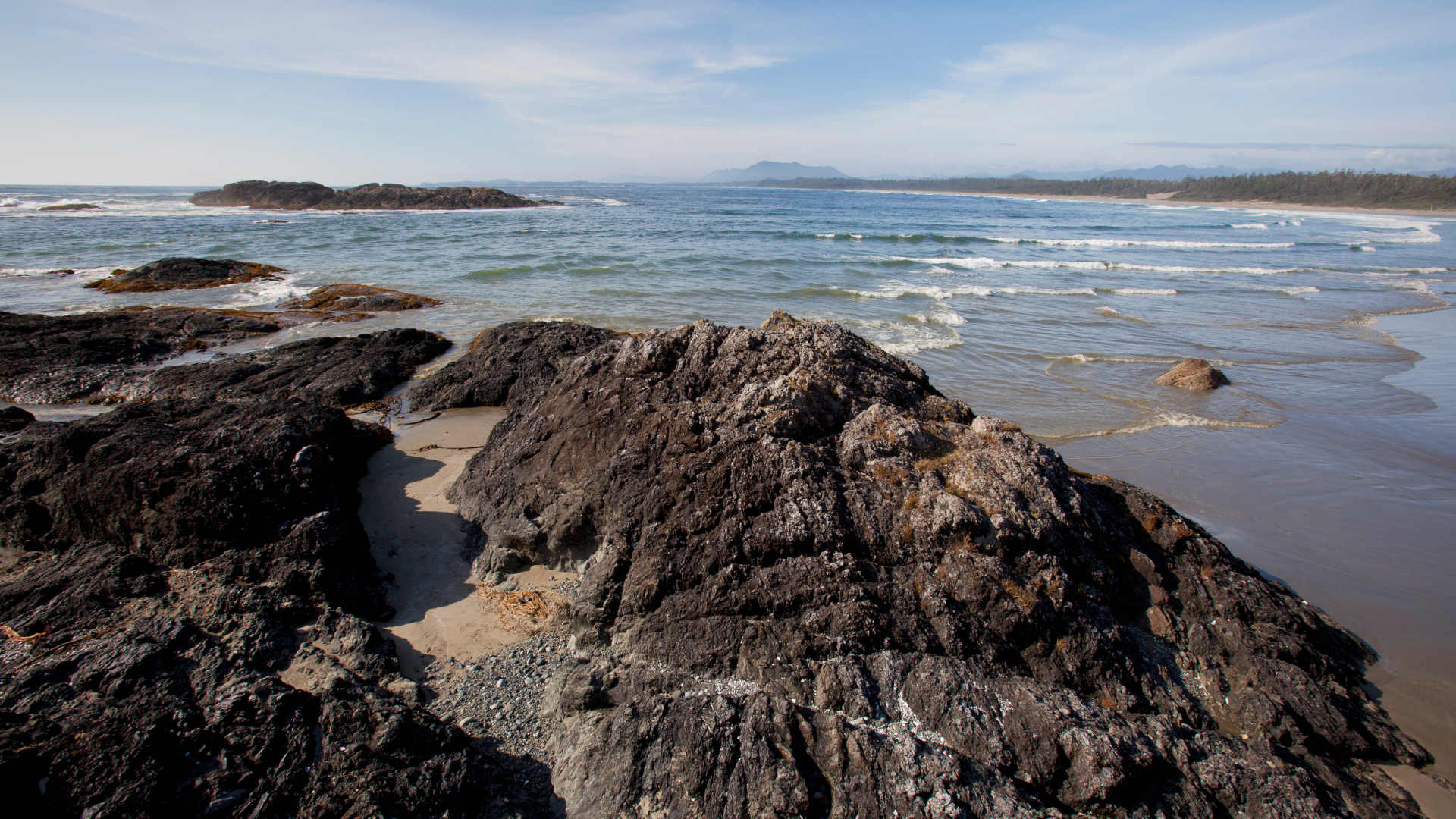
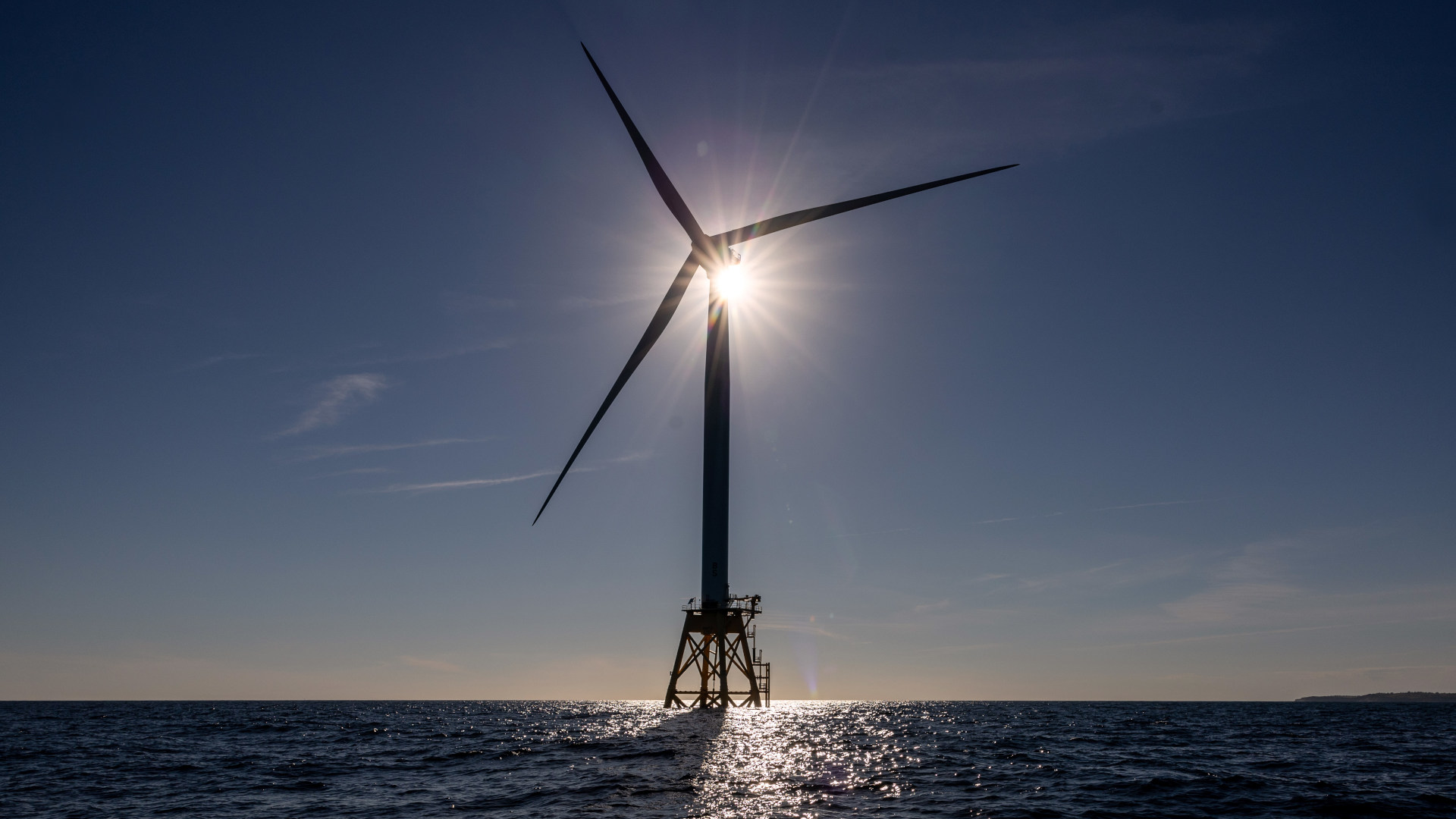
Comments are automatically closed one year after article publication. Archived comments are below.
Boondoggles for international criminals and their families and supporters. Pure pseudoscientific scam, and nothing else.